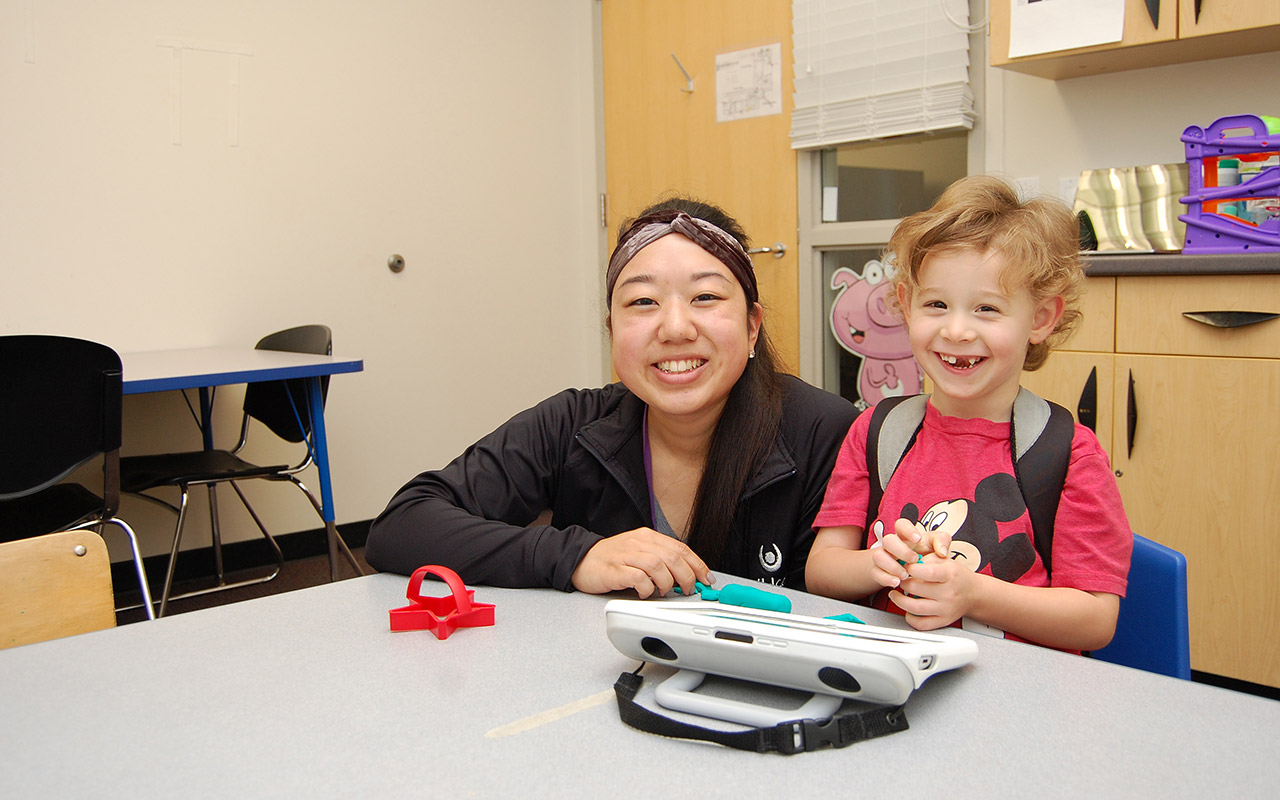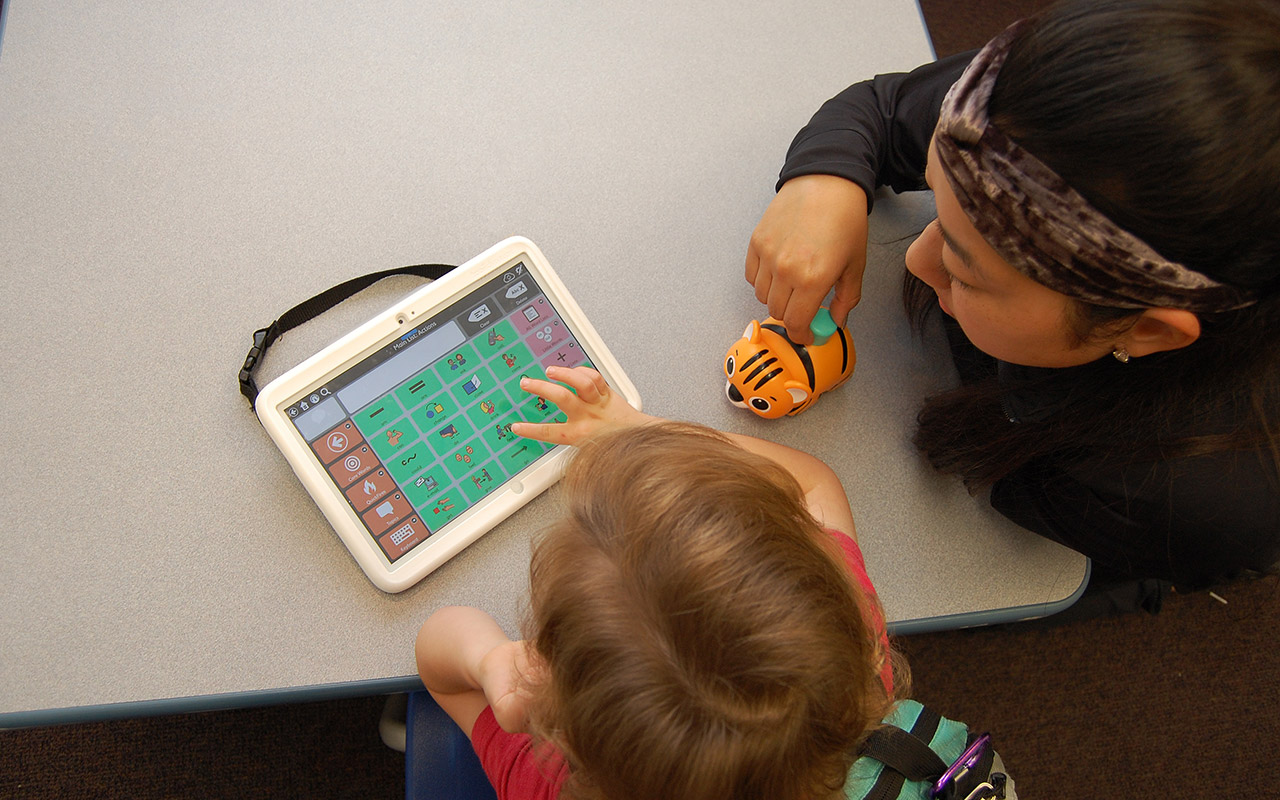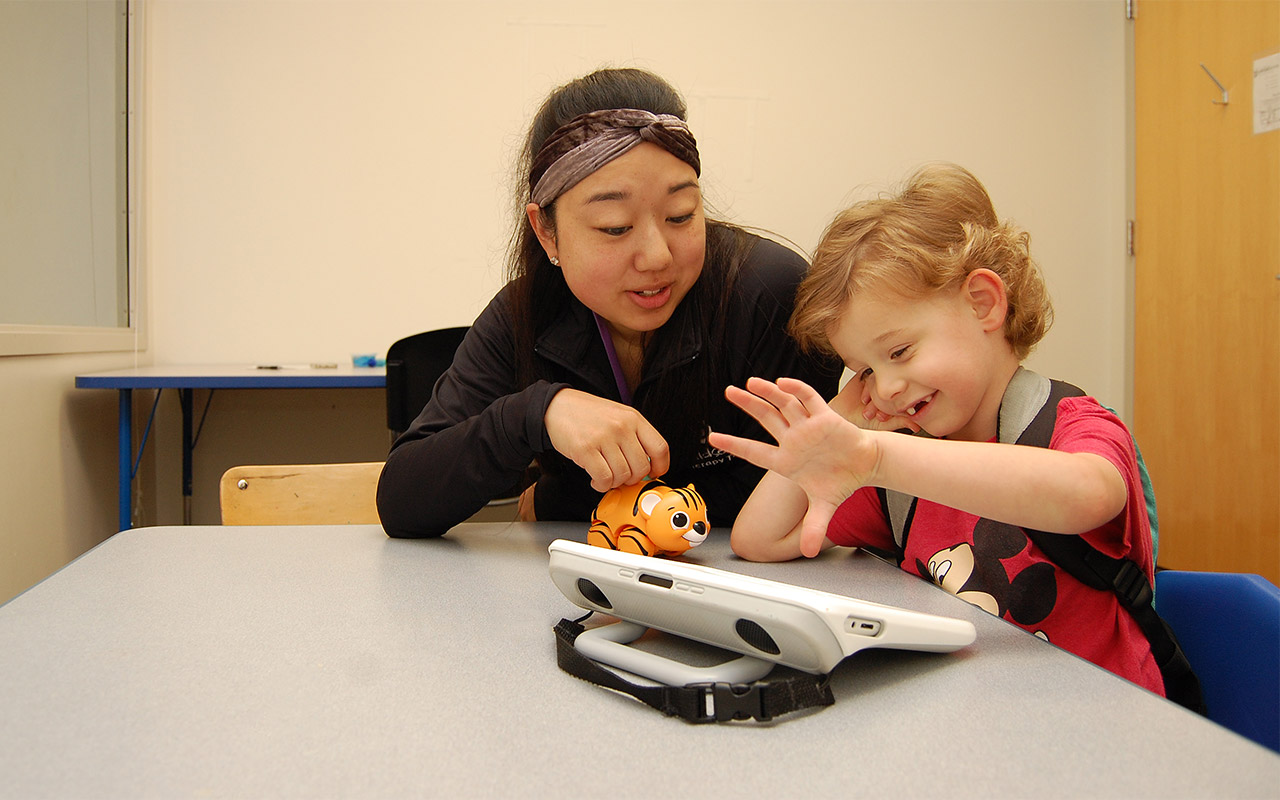
As a therapist at ChildServe, I love helping kids build their communication skills. One of the ways I do this is by helping them learn to use Augmentative and Alternative Communication (AAC). When a child’s verbal speech is impaired, AAC can be the bridge to telling others what’s on their mind.
AAC can be anything from communication symbols, pictures, high-tech devices (like an iPad or tablet with a communication program installed), writing, gestures, and more. These tools are designed to help kids who have verbal communication difficulties connect with their parents, siblings, and friends.
I recently saw a child use their AAC device to communicate, “My turn!” for the first time ever. They turned and looked at their classmate and knew right away that they had understood. What an amazing connection! Moments like that remind me just how life-changing AAC can be.


It is important for those of us who don’t use AAC to welcome and interact with those who do. Communicating with someone who uses AAC might seem intimidating, but the more you practice, the more comfortable you will be. Whether it’s your family member, friend, co-worker, or even someone you just met, I hope the tips below encourage you to reach out and connect with the people in your life who use AAC:
- Presume that an AAC user can understand you. They may understand language at a higher level than what they are able to communicate back to you using words verbally.
- Do not step in and speak for the AAC user.
- Be patient and don’t rush. At times, AAC users might take a little longer to communicate, but that doesn’t mean they’re not capable of sharing their thoughts with you.
- Do not force the person to try to say their message out loud if they have already used AAC to communicate successfully.
- If you are helping someone who is learning to use their communication system, learn the system too. It would be impossible to teach someone a language you can’t speak yourself, but when you learn their AAC system you can provide many models for them in different situations.
- Make sure the communicator always has proper access to their preferred AAC tool – whether it be picture symbols, a device (e.g., communication tablet), keyboard, writing tools, etc. It is not okay to limit and/or take away someone’s communication.
About
ChildServe improves the health and well-being of nearly 5,800 children each year through specialized clinical, home, and community-based programs and services. We serve children with developmental delays, disabilities, injuries, and other special healthcare needs.
Follow Us
Contact Us
Johnston | 515-727-8750
Ames | 515-232-7220
Des Moines | 515-280-5332
Iowa City | 319-351-5437
Cedar Rapids | 319-777-7450
Links
